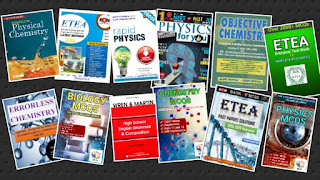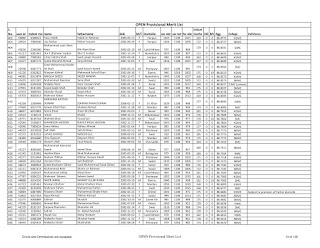CHAPTER NO.11 THERMOCHEMISTRY
1.
|
ΔH per mole is expressed in the units
of
kJ
a.
oF
b.
0C
c.
K
|
A
|
2.
|
Which one of the following is not a
state function
a.
Enthalpy
b.
Heat and work
c.
Temperature
d.
pressure
|
B
|
3.
|
for solids and liquids ΔH
a.
= ΔE
b.
> ΔE
c.
<tE
d.
ΔE = 0
|
A
|
4.
|
1 k cal is equal to
a.
418 x 103 J
b.
41.8 x 103 J
c.
4.18 x 103 J
d.
0.418 x 103 J
|
C
|
5.
|
Standard enthalpy for one mole of a
substance which exists in its natural state at 1 atm pressrure is measure at
a.
0K
b.
298 K
c.
273 K
Non of these
|
B
|
6.
|
ΔH can be measured indirectly by
applying
a.
Avogadro’s law
b.
Gas laws
c.
Hess’s law
d.
Faraday’s law
|
A
|
7.
|
Enthalpy means
a.
Disorder
b.
Transition state
c.
Rate constant
d.
Heat content
|
D
|
8.
|
No work is done at constant
a.
Pressure
b.
Volume
c.
temperature
d.
mass
|
B
|
9.
|
heat capacity depends on
a.
pressure
b.
volume
c.
composition
d.
mass
|
D
|
10.
|
which one of the following reaction
is spontaneous
a.
endothermic
b.
exothermic
c.
reversible
d.
irreversible
|
B
|
11.
|
the energy exhibited by water in a
dam is
a.
potential energy
b.
kinetic energy
c.
electric energy
d.
heat energy
|
A
|
12.
|
when heat is absorbed from the surrounding,
the process is
a.
Reversible
b.
Mechanical
c.
Exothermic
d.
endothermic
|
D
|
13.
|
a spontaneous reaction is one, which
is accompanied by
a.
lowering of energy
b.
increase of energy
c.
lowering of volume
d.
increase of volume
|
A
|
14.
|
the sum of al energies of all the molecules
or atoms of a substance is called its
a.
specific heat
b.
heat capacity
c.
latent heat
d.
internal energy
|
D
|
15.
|
which one of the following process
has ΔH positive
a.
ionization energy
b.
electron affinity
c. combustion
d.
exothermic reactions
|
A
|
16.
|
which one of the following is example
of non-spontaneous change
a. aging
b.
gas mixing
c. bringing water uphill
d.
all of these
|
C
|
17.
|
which one of the folloqing show first
law of thermodynamics
a.
q = ΔE + W
b.
q = ΔE - W
c.
q = - ΔE + W
d.
non of these
|
A
|
18.
|
the unit of work and heat is
a. Nm
b. J
c.
Nm-2
m3
d.
All of
these
|
D
|
19.
|
Standard heat of neutralization is
a.
890 KJ/mol
b.
-57.4 KJ/mol
c.
-23 KJ/mol
d.
Non of these
|
B
|
20.
|
1 dm3 atm =
a.
101.35 J
b.
101.35 KJ
c.
100 KJ
d.
60 J
|
A
|
21.
|
When one mole od ideal gas expand
from 15 dm3 to 20 dm3 against constant pressure of 2
atm. The word=k done is
a.
2 atm dm3
b.
4 atm dm3
c.
5 atm dm3
d.
10 atm dm3
|
D
|
22.
|
The amount of heat absorbed by 1g of
a substance to raise the temperature by one degree
a.
Heat capacity
b.
Specific heat
c.
The molar heat capacity
d.
Non of these
|
B
|
23.
|
The SI unit of heat capacity is
a.
JK
b.
J/K
c.
K/J
d.
JKK
|
B
|
24.
|
Heat of reaction =
a.
Heat of product x heat of reactant
b.
Heat of reactant – heat of product
c.
Heat of product – heat of reactant
|
C
|
25.
|
Heat of product/heat of reactant
q =
a.
nc
b.
n ΔT
c.
n C ΔT
d.
n C / ΔT
|
C
|








Comments
Post a Comment